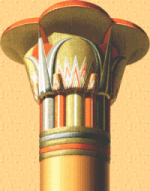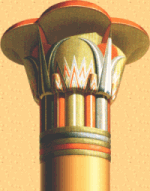 |
Though many were the royal ladies of the late XVIIIth Dynasty, the time was not completely devoid of apearances put in by the rare and precious princes. More than a few died young, some were so priviliged as to dream of the honor of Crown Prince, and those who persisted despite the times inherited the Two Lands whose sons they truly were.
First-born son of Nebmaatre Amenhotep and Queen Tiye; Crown Prince Thutmose was one of six children known to have been born to Amenhotep III and Queen Tiye, having taken his first breath sometime between regnal years 16-19. As the eldest son, he was heir apparent to the throne of the Two Lands and overshadowed his younger brother Amenhotep IV with the numerous titles and honors granted to him by their father ...
Son of Akhenaten and the Secondary Queen Kiya Undoubtedly the image most often envisioned when one thinks or hears of Tutankhamun is that of his golden funeral mask. Reflected in the burnished contours, outlined with countless inlays, is a vision of a Pharaoh who, despite his youth, is secure in his power whilst modestly aware that he governs the most bountiful nation in the ancient world. This is Tutankhamun as he wished to be seen before the gods, the "Living Image of Amun." But the glitter of the golden mask often overshadows another portrayal with which it shared the same tomb and subject. All of 30 cm tall and carved from wood, gessoed and painted, the sculpture captures Tutankhamun's youthful head emerging from a lotus blossom, his elongated skull tapering back from the cherubic roundness of his face. Here we are presented not with a king, but a boy, a prince. This is Tutankhaten, "Living Image of Aten" ...
|
 |
||||||||||||||||